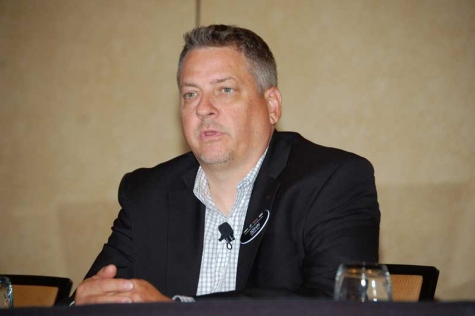Safety inspections required by automakers as part of post-collision repairs sometimes include measurement of the steering column to ensure it was not damaged in an accident.
Speaking at the Collision Industry Conference (CIC), held virtually in late July, Jason Bartanen of CIC’s Emerging Technologies Committee said such requirements have led more shops to measure steering columns---and, in some cases, to find discrepancies in the OEM information.
Bartanen said General Motors, for example, has a requirement to inspect the steering column for “bending, twisting, buckling or any type of damage” after any collision.
In one instance, Bartanen said, a shop found the steering column in a GMC Sierrra appeared to have collapsed slightly because it measured 273 mm, not the 286 mm called for in the GM collision repair information. But the new replacement column the shop received measured 278 mm, also short of the measurement in the automaker’s documentation.
Another shop, he said, similarly found a steering column in a Nissan Versa was shorter than indicated in that automaker’s collision repair information---only to then find that it was the same length as several replacement columns the shop ordered.
So what should a shop do in such instances?
“That’s the question we’re trying to get some clarification for from the vehicle manufacturers,” Bartanen said, saying in the case of the GM column, the shop installed the replacement part given the column in the car was even 5 mm shorter than the replacement part. “The people I’ve talked to are, for the most part, putting the old column back in if it’s measuring the same as the replacement column.”
Bartanen said the discrepancy could be based on data from OEM engineering drawings not matching the actual part once it went into production. In some cases, it could be shops are not measuring the columns correctly; he said Subaru is one automaker that provides better illustrations than some other automakers as to what distances on the columns are to be measured.
But any incorrect measurements in the OEM information, he said, may be impacting cycle time and repair costs, damaging credibility with consumers, fostering tensions between shops and insurers and placing undue burden on the parts supply chain.
“All those things aside, my biggest concern is we finally have this momentum of people starting to read and follow OEM procedures, and if they’re getting bad information, we’re going to have technicians and repair facilities and insurance personnel start to ignore those OEM procedures,” Bartanen said. “They may think: ‘If this is bad, what else in the manual is inaccurate? What else can I just arbitrarily ignore because maybe it’s wrong? Maybe that sectioning procedure was put in the wrong place. Maybe the material type or thickness was wrong.’
"If we’re ignoring the procedures, ultimately we’re going to compromise customer safety. That’s not okay. We need information that’s accurate, and we need collision repair professionals following that information to ensure we’re putting our customers back in vehicles that are safe.”
General Motors in July also said its published requirements for inspections, which it currently says must be completed “after any collision,” will be reviewed to see if they can be scaled back for vehicles needing only minor repairs.
“We recognize that the requirements and processes we had laid out…are extremely labor intensive and vehicle invasive,” GM’s John Eck said.
A survey of 17 automakers showed GM and Subaru are the only two that require extensive inspections following any collision, regardless of severity. Eck emphasized that prior to its new procedures being finalized, GM’s current post-collision inspection requirements remain in place.
“Until then, nothing has changed,” Eck said.










John Yoswick